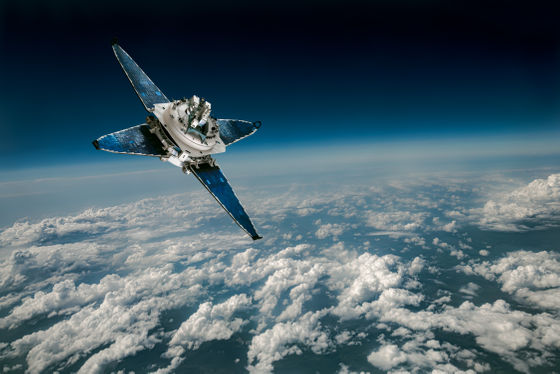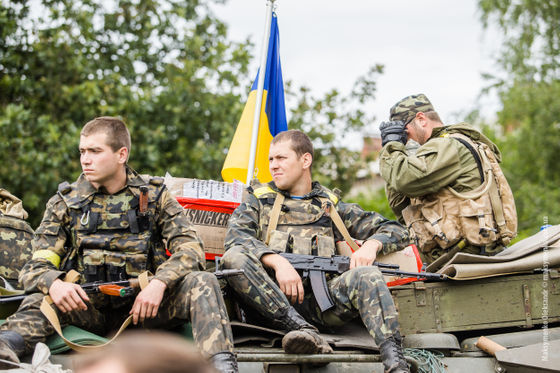What are Palantir's information and combat management algorithms that gave Ukraine the edge in the war with Russia?

As the Ukraine war enters its second winter, Russia has repeatedly attacked Ukraine's power infrastructure and hospitals. It is believed
Opinion | How the algorithm tipped the balance in Ukraine - The Washington Post
https://www.washingtonpost.com/opinions/2022/12/19/palantir-algorithm-data-ukraine-war/
Opinion | The Ukraine war gave the algorithm its opening, but dangers lurk - The Washington Post
https://www.washingtonpost.com/opinions/2022/12/20/ukraine-war-russia-tech-battlefield/
At the heart of the system Palantir has deployed for the Ukrainian military is the ability to aggregate data from commercial vendors to provide a detailed picture of the battlefield. For example, Palantir's MetaConstellation tool allows Ukraine to see what civilian data is currently available for a particular battlespace. The data ranges from conventional photography, to synthetic aperture radar that sees under clouds, to thermal imagery that detects artillery and missile launches.
Commercial data is provided by a number of companies, such as optical radar and synthetic aperture radar vendors such as satellite companies Maxar Technologies, ICEYE, and Capella Space, as well as the aerospace industry Airbus. . Thermal imaging for fire detection from the National Oceanic and Atmospheric Administration can also be used to detect artillery explosions.

Ignatius saw demonstrations for journalists, including detailed digital maps of
By integrating such data, the Ukrainian military command will be able to overcome the deficit of combat information known as ' fog of war'. By using artificial intelligence to analyze sensor data, you can quickly obtain information essential to battle, such as the position of friendly and enemy forces, and what weapons are most effective in attacking enemy positions. This is because you can quickly tell the commander on the ground whether or not it is. After the battle is over, we will evaluate how accurate our data was and update the system based on that.
Also, Palantir's technology is important not only for the front line but also for logistical support. By using the database Palantir is building in the army, you can instantly check which unit's soldiers have what skills and experience, and what weapons and ammunition they have. Logistics issues like this used to take weeks to figure out, but with the introduction of new technology, they can now be done in seconds.

by
Underpinning these systems is a mesh network of broadband connections from SpaceX's Starlink, led by Elon Musk. Delivered by approximately 2,500 satellites, the system allows Ukrainian soldiers to quickly upload local information and download target information to build a ' kill chain ' from spotting, attacking, and destroying enemy forces. SpaceX's Starlink terminal and Tesla's Powerwall system , which consists of generators and batteries, also play an important role in ensuring communications in Ukraine, which suffers from power shortages.
Alex Karp, CEO of Palantir, told Ignatius, 'The power of advanced algorithmic warfare systems has become so great that the power differential of having tactical nuclear weapons against an adversary that has only conventional weapons is comparable. The public tends to underestimate this, but our enemies know it all too well.'
On this point, Ukrainian soldiers who are actually fighting are of the same opinion. ``For us, this system is a matter of life or death,'' said Stepan, a Ukrainian military officer who gave a demonstration to Mr. Ignatius, speaking under a pseudonym for security reasons. Mr. Stepan was designing software for a retail company before the war, but now aims to 'maximize target acquisition' for soldiers rather than shoppers.

by Bernat Armangue/AP
Another officer, Lesha, who was a PC-related engineer before the war, said, ``Ukraine depends on technical assistance from the United States now, but by the end of the war I think that sells software to Palantir, ”said the goal of reviving Ukraine as a technological powerhouse after the war. According to Mr. Lesha, the Ukrainian army always has a software developer in the battalion. This attitude of emphasizing technological strength supports resistance to the Russian army, which is superior in military strength.
However, it is not only technology that influences warfare. For example, while the US-built Afghan army collapsed before the Taliban attack due to low morale, Kurdish fighters in Syria succeeded in crushing the Islamic State of Iraq and the Levant (ISIL) . . Ignatius believes the difference comes down to having both the weapon and the determination.
Of the lessons he learned from his coverage of Ukraine, Ignatius said, ``The key to this war would be Ukraine's high-tech superiority and the ability of its military to adapt quickly. It's also a central fact of this extraordinary drama that the world has watched since Russia's reckless invasion began: It's a victory won by man and machine together.'
When asked about the future of technology-led warfare, he said, 'When I spent several weeks researching the tools developed by companies like Palantir, the first word that came to mind was deterrence. And this is not limited to Ukraine: with a technological revolution like this, an adversary who wants to attack Taiwan, for example, will face a much more difficult task than they imagined, and a cyberwar space like this one. With the rise of , my message to China is 'think again'.'
At the time of writing the article, the Ukrainian war has not ended yet, but countries around the world are paying attention to the results of Palantir's software in Ukraine. On December 21, 2022, Palantir and the British Ministry of Defense announced a contract to introduce Palantir's system to the British Army for £75 million (about 12 billion yen) over three years.
#Palantir is proud to support the rapid modernization of the UK Armed Forces. This partnership with @DefenceHQ will help enable world-leading operational capability for one of the US's closest allies.
— Palantir (@PalantirTech) December 21, 2022
Learn more: https://t.co/fB7ASTUFmm
Related Posts:
in Software, Posted by log1l_ks







